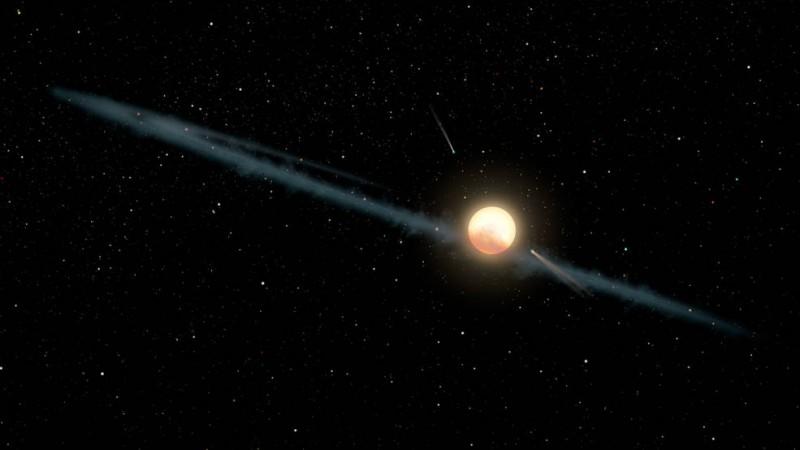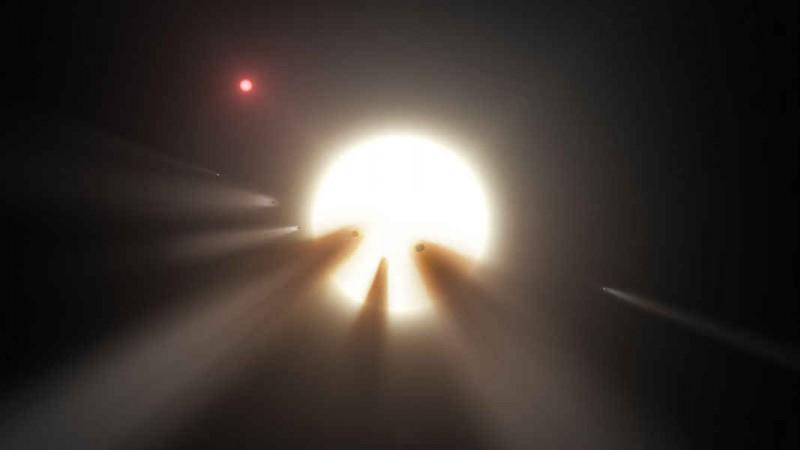
It was speculated that the mysterious dimming of Tabby's Star was due to an alien megastructure, but researchers have rubbished that theory and blame it all on the uneven dust cloud prevailing around the star.
Here are the 7 things to know:
1. Dubbed as KIC 8462852 aka Tabby's Star, and present 1,280 light years away from Earth in the constellation Cygnus, the star was an area of interest for astronomers and researchers because of the weird phenomenon it possessed. The star showed sudden drops in its luminosity, which is not a normal behaviour portrayed by a star that is slightly bigger than the Sun.
2. The first significant drop of 15 percent in the star's luminosity was observed on 5 March 2011. The next time the luminosity dropped around 22 percent, which took place 726 days later on 28 February 2013. The third drop in the star's luminosity was around 8 percent, which was analysed 48 days later on 17 April 2013.
3. In September 2015, a cohort of astronomers from Yale University with Tabetha S. Boyajian as the lead researcher analysed the star and found that there was a drop of almost 22 percent in its luminosity. The star has been nicknamed 'Tabby's Star' in honour of the team lead -- Tabetha.
4. This mysterious phenomenon led to the formation of numerous hypotheses like: The star might have swallowed a planet and it is not stable. A popular conspiracy theory that was formulated because of the star's mysterious phenomenon was that an alien megastructure orbiting around the star was causing the fluctuation in its luminosity. One more theory formed by researchers was a group of space rocks and debris are responsible for the star's dimming.

5. Further research carried out by astronomers from the University of Arizona, US with the help of NASA's Spitzer and Swift missions and AstroLAB IRIS observatory -- a public observatory with a 68 centimetre reflecting telescope located near the Belgian village of Zillebeke -- came to the conclusion that the dimming of the star is because of the presence of uneven dust cloud that is moving around the star.
6. Researchers found less dimming in the infrared light from the star than in its ultraviolet light using Spitzer.
"This pretty much rules out the alien megastructure theory, as that could not explain the wavelength-dependent dimming," said Huan Meng from the University of Arizona, who is the lead author of the study.
"We suspect, instead, there is a cloud of dust orbiting the star with a roughly 700-day orbital period," Meng added.
7. Based on the strong UV dip, the astronomers concluded that the blocking particles must be bigger than interstellar dust, small grains that could be located anywhere between Earth and the star. Such small particles could not remain in orbit around the star because pressure from its starlight would drive them farther into space. Dust that orbits a star -- circumstellar dust-- is not so small it would fly away nor is it so big that it can block light uniformly in all wavelengths.
According to the researchers this is the best explanation about the enigmatic dimming of the Tabby's star.














